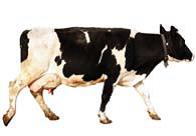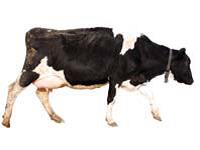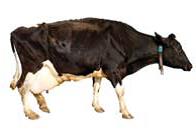Mobility
Why is it measured?
Lameness is known to be a huge welfare issue across the dairy industry with over 30% of the national herd being lame at any one time. However the prevalence of lameness has been shown to range from 0% to 70% at farm level. Lame cows are not only in considerable discomfort and pain but are predisposed to further disease challenges (e.g. mastitis, swollen hocks) reduced fertility, lowered milk yield and decreased appetite. Primarily all these factors significantly affect the welfare of the cow but in addition they have hefty financial implications both in the short and long term.
Early recognition, investigation and treatment of any lame animal is essential to limit pain, aid recovery and minimise any additional complications. Therefore regular on farm mobility assessment is an important step in resolving lameness issues. Lameness caused by foot lesions can be both infectious (digital dermatitis, foul) and non-infectious (sole haemorrhages, sole ulcers and white line disease) and it is important for farmers to identify the types of lesions present in order that likely causes can be addressed.
How to assess and score using the AssureWel measure
| 1. Mobility |
| a) Individual scoring Individual measure |
Sample: 20 cows selected at random (3 or more assessed jointly with stockperson)
Assess using the DairyCo scoring method. Observe cows, ideally on a hard (i.e. concrete) non-slip surface. Monitor each cow individually allowing them to make between 6-10 uninterrupted strides. Watch the cow from the side and the rear.
|
Scoring:
0/1 = Good/Imperfect mobility
Walks with even weight bearing and rhythm on all four feet, with a flat back;
long fluid strides possible; or steps uneven (rhythm or weight bearing) or
strides shortened; affected limb/s not immediately identifiable |

|
2 = Impaired mobility
Uneven weight bearing on a limb that is immediately identifiable
and/or obviously shortened stride
(usually with an arch to the centre of the back)
|

|
|
3 = Severely impaired mobility
Unable to walk as fast as a brisk human pace
(cannot keep up with the healthy herd)
and signs of impaired mobility (score 2)
Please indicate if mobility scoring is carried out at pasture.
Images kindly supplied by DairyCo
|

|
| b) Assessment Records |
Verify if mobility scoring is being carried out on farm.
Check and comment on who is carrying this out, any formal training they have received and the frequency and scope (e.g. whole herd) of mobility scoring conducted. |
| c) Lameness per 100 cows Records |
| From the Red Tractor Herd Health Plan (Annual Monitoring and Review section) record the number of recorded cases of lameness per 100 cows for the previous 12 months. |
- Mobility
- Body condition
- Cleanliness
- Hair loss, lesions
- Swellings
- Broken tails
- Response to stockperson
- Cows needing further care
- Mastitis
- Calf/Heifer survivability
- Cull and Casualty Cows